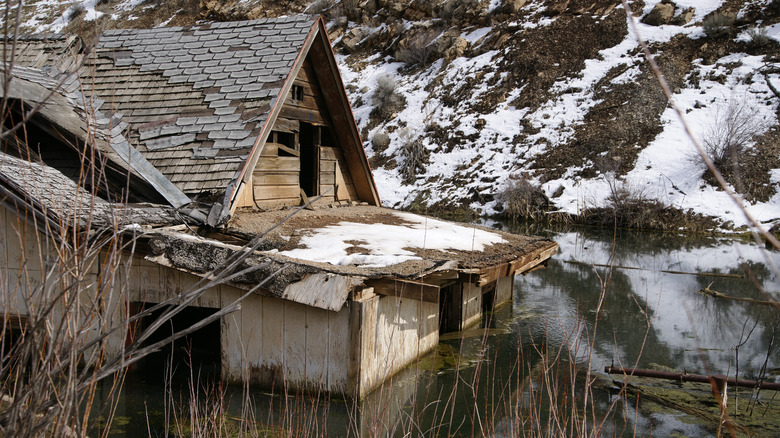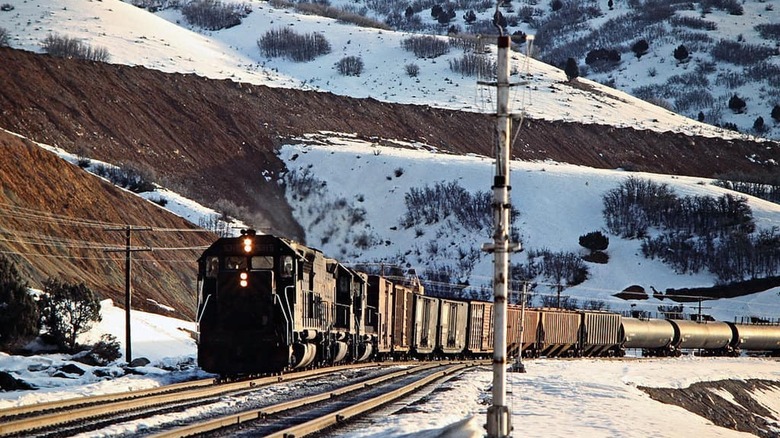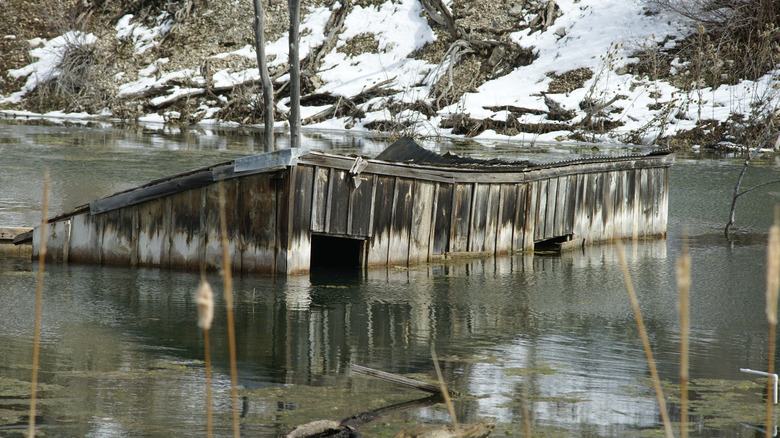The Most Unique Ghost Town In The West Is A Spine-Tingling Destination In Utah
Ghost towns across the U.S. are typically abandoned mining towns, and their stories and structures have been abandoned to the harsh winds of time. However, one small town has a different story. Instead of mining being the main draw, the rural hamlet of Thistle, Utah, served as an important stop on the Denver and Rio Grande Western Railroad until an unforeseeable disaster sent the town into the depths of memory. Some locals stay away due to painful memories of the past; others believe the land is now haunted.
Whether or not you believe in ghosts is another story, but you might feel chills creeping down your spine while exploring the remnants of this once-bustling western town. Or maybe not. Either way, the story of Thistle's demise from a bustling train stop to a tragic ghost town is more than enough for any lover of the macabre.
As Thistle's importance to the rail network dwindled, few families remained. In 1983 — 100 years after the founding of Thistle — rain and snow ravaged Utah, causing the costliest landslide in U.S. history. What then became of this tight-knit community?
History of Thistle, Utah
Nestled amongst the trees in Spanish Fork Canyon, the small town of Thistle flourished for a time as a ranching community and a major stop along the rail line. The popularity of such a small town was due to its stop as a railroad resupply for steam engines passing from Denver to Salt Lake City. Most of the earliest inhabitants settled here on assignment from railroad companies to service the trains as they passed through. As the railroad's importance began to grow, so did the town. At its highest point, Thistle had 650 residents and many buildings, including a schoolhouse, several restaurants, a saloon, and — of course — the train depot.
Before the addition of dining cars, Thistle was an important stop for hungry travelers. After the change from steam engine to diesel, Thistle's importance dwindled. The town's population declined rapidly; by 1982, only 22 homes remained occupied. In the spring of 1983, heavy rains ravaged the area, and on April 16, the costliest landslide in U.S. history wiped out the train tracks. Evacuation of Thistle became mandatory as the landslide dammed the Spanish Fork River, causing flooding. Residents evacuated to a nearby town with whatever they could grab; by the next day, the water had reached the rooftops of the homes. By the time the flooding was over, the landslide had created a 3-mile-long lake.
How to visit the remains of Thistle
Today, the once bustling little town of Thistle is completely submerged under miles of swampland, and only a few rooftops remain visible from U.S. Route 6/89. If you're hoping to visit what is left of Thistle, take the I-15 from Salt Lake City (in the direction of Spanish Fork) and get off at Exit 261, heading east on U.S. Route 6/89. If you'd prefer a view of the disaster from downstream, head right on Spanish Fork River Park Road. Alternatively, another viewing location is accessible a further 12 or 13 miles on I-15 at a large turnout immediately before a double road cut. This turnout provides information about Thistle and a spectacular view.
So, is the chilling abandoned town of Thistle haunted? That up to you to decide. Since the time of the flood, the town and whatever belongings were left behind have been lost to the murky waters below. Whatever the case, one thing for certain is that this tragedy wiped away the memories of those who once called this small community home.


